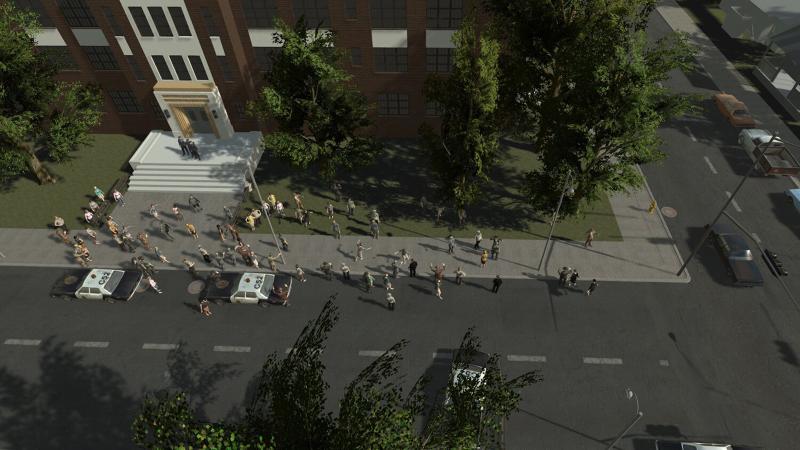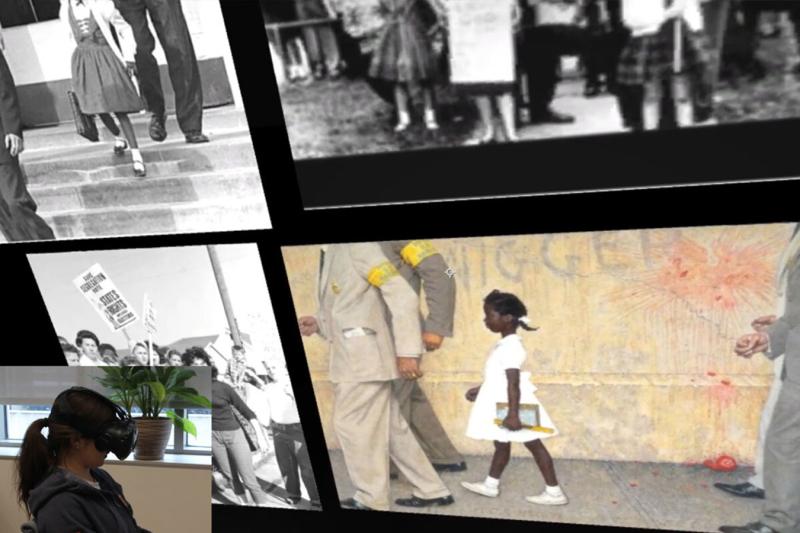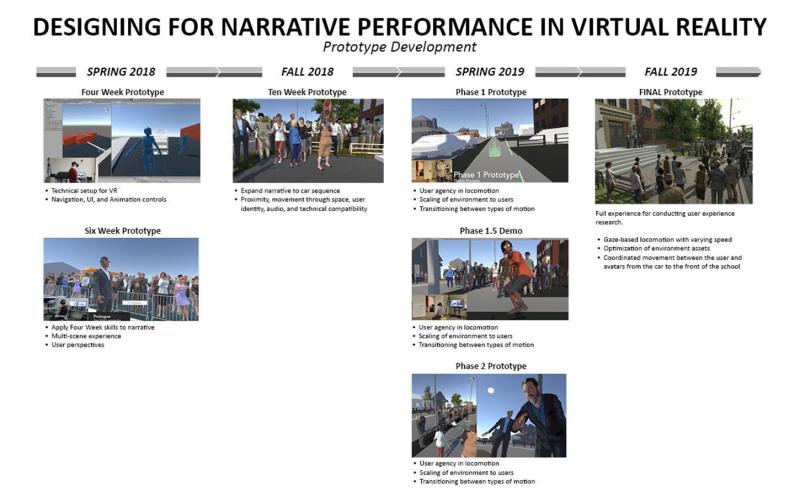Designing for Narrative Performance in Virtual Reality
Summary
In this immersive experience, users go through a scene based on historical accounts of Ruby Bridges’ first day at an integrated elementary school in 1960, experiencing her walk through the mob from the perspective of a six-year-old. Creating this experience showcases how designing in VR can both educate and generate conversation around historical events.
Project Team
Graduate Researchers – MFA Thesis Project
Abigail Ayers
Tori Campbell
Motion Capture Actors – Department of Theatre MFA and BFA Students
Lillian Brown
Connor Graham
Kylie Logan
Erin Alys
Rina Hajra
Faculty Advisors
Maria Palazzi, ACCAD Director, Professor of Design
Scott Swearingen, Assistant Professor of Design
Vita Berezina-Blackburn, Animation and Motion Capture Specialist
Jeanine Thompson, Professor of Theatre
Dana Carlisle Kletchka, Assistant Professor of Art Museum Education, AAEP
Project Description
The process of developing this experience served as a case study for two branches of research: a framework for designers developing narrative VR content, and a framework for how designers can better elicit expressiveness in digital character performance for virtual experiences.
Abigail’s research focused on the design decisions made during the development of this project, such as how information was delivered to the user throughout the experience or what forms of interaction are available to the user. The process revealed elements required of a flexible design framework, specifically by understanding the contributions of both the designer and the user in the creation of intentional and compelling VR spaces. By understanding the importance of the user’s contributions as a vital component of virtual spaces, designers are better equipped to make impactful design decisions through the development process.
Tori’s research involved discovering approaches to directing performers for motion capture in VR to improve expressive character performance within virtual reality. The practice-based research methods enabled her to analyze the parts of the front end of the VR production process and define a group of VR performance qualities. This framework of qualities were then used to help guide the construction and capture of movement for creating meaningful, immersive and interactive experiences with virtual characters. Designing for character performance is an important step in the process of creating engaging VR experiences with expressive and relatable characters. Strong character performance generates accurate, descriptive motion – which is known to increase believability, and in turn, immersion for the VR participant.





Project Exhibited At:
Zora! 32nd Annual Zora Neale Hurston: Festival of the Arts and Humanities, Orlando, FL
ACCAD 2018 Open House
ACCAD 2019 Open House
ACCAD 2020 Playtesting Day
Related Research Presentations:
Abigail Ayers, Paper Presentation The Collaborative Nature of VR Applications, Design Educators Symposium, AIGA Design Conference, Pittsburgh, PA, March 30–April 1, 2020
Tori Campbell, Paper Presentation The Design Process for Enhancing Visual Expressive Qualities of Character from Performance Capture into Virtual Reality, CRDH: From Capture to Rendering of Digital Humans for AR/VR, IEEE AR/VR Conference, San Diego, CA, December 9–11, 2019
Personal Websites:
Abigail Ayers
Tori Campbell
